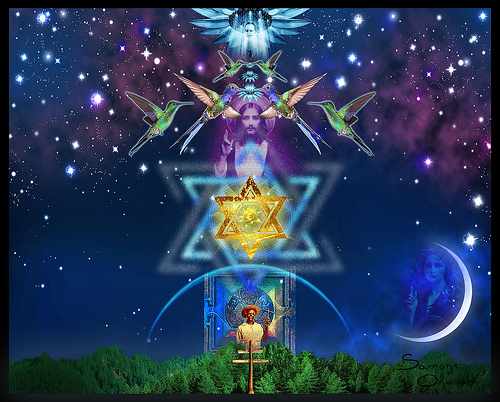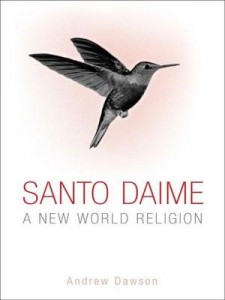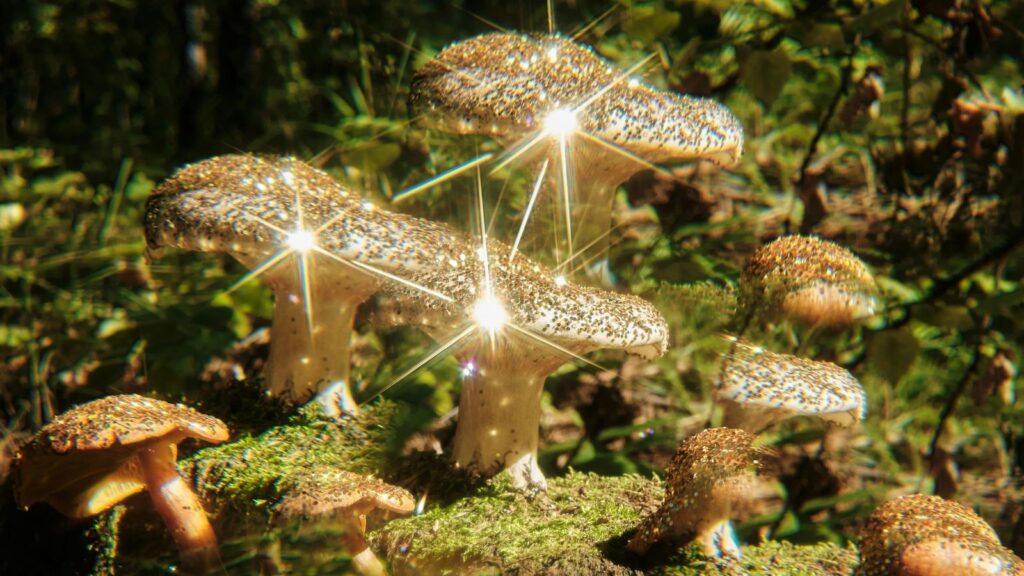Entering into the initial phase of research regarding the Santo Daime religion, I had little understanding of what it really was, or how the activities within the religion generated something unique, but my interest is in finding the answer to the question, “What is it that draws modern middle class individuals to a highly ecstatic and mystic religious culture in light of the increasing presence of scientific rationalism and reductionism?” Andrew Dawson’s book has helped me to make discoveries that have led me closer to finding the answer to the question of why we moderns still seek out the mystic and ecstatic. In order to find an answer, one must find the proper context within the culture, the economics, the background and the history that surrounds Santo Daime and this framework has been deftly established in Dawson’s book.
Dawson explains the questions he sought to answer in his book:
Building upon questions raised by my first experiences of Santo Daime, the research undertaken from 2007 to 2011 primarily focused on three areas. First, research concerned the origins and ethos of Santo Daime as a religious system. Here, attention was paid to the socio-cultural conditions of the Amazon region that gave rise to Santo Daime, the historical trajectory of the movement (from its Amazonian beginnings to international status) and the various practical and symbolic components which combine to form its hybrid ritual repertoire and variegated religious world view. Second, consideration was given to the processes of transition and transformation associated with Santo Daime’s initial expansion beyond the Amazon region and subsequent internationalization as part of the non-mainstream, alternative religious scene. Importantly, Santo Daime’s geographical spread and ongoing growth is intimately connected with a significant shift in its demographic profile and concomitant modification of the practical-symbolic dynamics at play across its ritual repertoire and religious world view. In this respect, research focus rested upon the implications for traditional beliefs and behaviour of Santo Daime’s progressive insertion within the alternative religious scene populated by middle-class members of late-modern, urban-industrial society. Third, attention was paid to Santo Daime’s relationship (as a now established occupant of the non-mainstream religious landscape) with the overarching societal processes and socio-cultural dynamics constitutive of Western late-modernity in general and urban middle-class subjectivity in particular. Here, research centred upon the ways in which the practical-knowledge furnished by Santo Daime speaks to and articulates the life-experiences, aspirations and concerns of its urban-professional membership. It also engaged Santo Daime relative to the overarching interface between late-modern society and contemporary religiosity.” (Dawson. Santo Daime)
Dawson asks where Santo Daime came from, how it began and has continued its expansion and how it fits and flourishes where its presence is established. In relation to this, we can see what common themes flow across these three primary questions in order to find that thread which speaks to its attraction. According to Dawson, his inquiry takes an interdisciplinary tone: “by combining the data acquired during fieldwork with insights offered by a variety of academic disciplines and approaches, not least of which are the sociology of religion, religious studies, social anthropology and cultural studies.” Because of his interdisciplinary approach, Dawson’s work provides an excellent model for my own research into Santo Daime. Therefore, this work is important, not just because it shares the same subject of my own interest, but because it behaves as a guide for the kind of query that is appropriate for the institutionalized style which is heretofore unfamiliar to me.
Santo Daime is unique among Christian, or proto-Christian religions in that it utilizes the Ayahuasca brew as its primary sacrament. Dawson explains the origin of the brew itself, which gives a better understanding of the origins of Santo Daime:
The word ‘ayahuasca’ derives from the north-Andean Quechua language and means ‘soul vine’ or ‘vine of the dead’. Although also serving social and therapeutic ends, as the literal translation of the term indicates, ayahuasca plays a key role in the spiritual practices of the indigenous South American cultures from which its production and consumption originates. Traditionally consumed in liquid form throughout the upper reaches of the Amazonian river system (i.e. Bolivia, Brazil, Colombia, Ecuador and Peru), ayahuasca is a generic term given to the preparation of the mildly psychoactive vine Banisteriopsis caapi.1 In its indigenous context, B. caapi is processed by communities belonging chiefly to the Aruák (e.g. Ashininka and Machiguenga), Chocó (e.g. Emberá and Noanamá), Jívaro (e.g. Aguaruna and Shuar), Pano (e.g. Kaxinawá and Marubo) and Tukano (e.g. Desana and Siona) peoples (Luna, 1986: 167–70; Luz, 2004: 37–68). Owing to their ability to intensify and prolong the psychotropic event, a range of other natural substances are combined with the vine. Although tree barks and coca or tobacco leaves are used, a common additive is the foliage of plants which contain the psychoactive agent N,N-dimethyltryptamine (DMT); not least among which is the “shrub Psychotria viridis.2 The term ‘ayahuasca’ is generally applied as much to these latter concoctions as it is to preparations using only the vine as its sole psychoactive agent. The passage of ayahuasca consumption from indigenous to non-indigenous contexts is thought to have occurred through the formation of mixed-race (mestiço) communities and by way of sporadic contact between indigenous peoples and non-indigenes (such as Irineu Serra) working in remote parts of the Amazonian forest (Franco and Conceição, 2004). Prior to the emergence of the ayahuasca religions of Brazil, the most popular form of non-indigenous ayahuasca consumption occurred principally among mestiço communities living on the borders between Brazil, Colombia, Peru and Bolivia. Known most popularly by the term vegetalismo, the mestiço consumption of ayahuasca is orchestrated by specialists who claim the spirits of certain plants (vegetales) as their teachers (professores) (Luna, 1986: 14–15). As with their indigenous counterparts, vegetalistas (known also as ayahuasqueros) use ayahuasca to invoke the presence of or facilitate interaction with the spirits of plants, animals and other supernatural forces.
As has been clearly evidenced and demonstrated by the work of Dr. Rick Strassman in his book, DMT: The Spirit Molecule, DMT generates the most intense mystical feelings presently known to humans:
The three pillars of self, time, and space all undergo profound transfiguration in a mystical experience. There no longer is any separation between the self and what is not the self. Personal identity and all of existence become one and the same. In fact, there is no “personal” identity because we understand at the most basic level the underlying unity and interdependence of all existence. Past, present, and future merge together into a timeless moment, the now of eternity. Time stops, inasmuch as it no longer “passes.” There is existence, but it is not dependent upon time. Now and then, before and after, all combine into this exact point. On the relative level, short periods of time encompass enormous amounts of experience. As our self and time lose their boundaries, space becomes vast. Like time, space is no longer here or there but everywhere, limitless, without edges. Here and there are the same. It is all here. In this infinitely vast time and space with no limited self, we hold up to examination all contradictions and paradoxes and see they no longer conflict. We can hold, absorb, and accept everything our mind conjures up: good and evil, “suffering and happiness, small and large. We now are certain that consciousness continues after the body dies, and that it existed long before this particular physical form. We see the entire universe in a blade of grass and know what our face was like before our parents met. Extraordinarily powerful feelings surge through our consciousness. We are ecstatic, and the intensity of this joy is such that our body cannot contain it—it seems to need a temporarily disembodied state. While the bliss is pervasive, there’s also an underlying peace and equanimity that’s not affected by even this incredibly profound happiness. There is a searing sense of the sacred and the holy. We contact an unchanging, unborn, undying, and uncreated reality. It is a personal encounter with the “Big Bang,” God, Cosmic Consciousness, the source of all being. Whatever we call it, we know we have met the fundamental bedrock and fountainhead of existence, one that emanates love, wisdom, and power on an unimaginable scale. We call it “enlightenment” because we encounter the white light of creation’s majesty. We may meet guides, angels, or other disembodied spirits, but we pass them all as we merge with the light. “Our eyes now, finally, are truly open, and we see things clearly in a “new light. (Rick Strassman. DMT: The Spirit Molecule. Page 204)
In relation to Dawson’s work, we can understand that this culturally powerful sacrament has been used since time immemorial among the small indigenous villages of the South America, but through a mixture of peoples and cultures, a kind of hybridization has occurred that has brought this powerful mystical experience to the Catholic mind. Catholicism itself holds many a powerful image over its followers, so we can see how potent a marriage between Christianity and the most powerful psychedelic known to man could form a magnanimous relationship with such seeming strange bedfellows. It seems clear, however that the hybridization of Catholic religious beliefs and mystical experiences spawned from Ayahuasca came as a result of an avoidance of religious persecution, moving to a more respectable and ‘normal’ religious posture of Catholicism reduced the risk of persecution and allowed for Ayahuasca to come out of the jungle:
Setting aside the extent of Afro-Brazilian influence upon the nascent ritual repertoire of Santo Daime, it is clear that by the late 1940s Irineu Serra (or Master Irineu as he was now called) and his fledgling community intentionally sought to minimize association with particular forms of popular religious expression; not least those prone to accusations of base superstition or black magic (MacRae, 1992: 65–6). At least in part, this move probably represented a response to escalating persecution orchestrated by resurgent Catholic authorities. Revitalized through its post-1890 reintegration within the international (i.e. Roman) ecclesiastical network and reinvigorated by the favoured legal-political treatment enjoyed under the Getúlio Vargas presidency (1930–45), the Catholic hierarchy in Brazil set about eradicating what it regarded as the outdated and superstitious excesses of much popular religious practice (Oliveira, 1985). Already susceptible to unwanted attention by virtue of its use of ayahuasca, Santo Daime’s weeding out of potentially controversial, but expendable, elements of its religious repertoire thereby made perfect sense at a time of increased persecution.” It is also made clear that the occult practices of the west, though not directly catholic, were more easily appropriated and adapted to the practices of the Santo Daime ritual because they were more homogenous in the west and therefore less prone to judgements of primitivism: “Above all, the beliefs and practices of European esotericism furnished the vehicle by which this transition was made. Before exploring the impact of European esotericism, however, something should be said of Santo Daime’s relationship with the popular Catholic world view to which its early members were exposed from birth. (Dawson. Santo Daime. Page 24)
And while there were still many points of disjoint, the Catholic framework was a fertile ground for an appropriation of imagery, archetypes and rituals that could successfully translate from the jungle to the city with the newfound power of the DMT laced Daime sacrament:
Popular Catholic ritual and daily devotions embodied an unabashedly pragmatic religiosity in which overwhelmingly mundane objectives were sought through a combination of saintly patronage and thaumaturgy (i.e. use of charms, spells, offerings, amulets and curses). Orchestrated through domestic shrines, local chapels and strictly segregated associations (e.g. irmandades and confrarias), popular Catholicism drew upon a raft of lay functionaries (e.g. benzedores, rezadores and festeiros) whose daily ministrations attended the social rhythms and hardships of everyday life (Azzi, 1978: 155). Given the nature of popular Catholicism, not least its overlap with aforementioned belief systems, the Christianization of ayahuasca traditions envisioned by Irineu Serra preserved much by way of their pragmatic ethos and supernaturalized world view. Consequently, while the names used and the modes of supplication may have changed, the pantheon of Catholic saints and heavenly forces to which appeal was now made served much the same purpose of securing healing, security and everyday well-being as the spirits and supernatural agents formerly engaged. (Dawson. Santo Daime. Page 25)
But it is readily apparent that Santo Daime has used Catholicism as a framework, using it as a kind of Trojan horse that legitimizes more theosophical perspectives and outright western magical practices in a context that is palatable and perhaps inconspicuous to the casual querent:
Within traditional esotericism, this quest for material transformation through the manipulation of immaterial forces was typified by the science of alchemy and its attempts to transmute lead into gold. Typical of their ameliorative moralistic bent, modern esoteric repertoires articulate the manipulation of immaterial forces in terms of the inner transmutation of human consciousness (here, higher-self) and its subsequent ascent up the evolutionary chain of being. Informed by esoteric knowledge as to the nature of these universal forces and the manner of their impact upon the world and its inhabitants, initiates of esotericism use techniques such as meditation and introspection to harness and subsequently manipulate these forces for their own and the greater good (Faivre and Needleman, 1992).” (Dawson. Santo Daime. Page 28)
The strong correspondence between the supernaturalized world of popular Catholicism and those of indigenous and African-derived belief systems readily lent itself to much by way of overlap and outright syncretism.” (Dawson. Santo Daime. Page 23)
What I’ve drawn from these observations is the idea that Santo Daime is not simply a variation of Christianity, but in fact a variation, modernization and hybridization of several seemingly divergent religious traditions into a unfathomably complex and yet ritualistically simple format that allows itself to change with trends and adapt itself according to its surroundings. In a way, Santo Daime is a demonstration of a kind of evolution of religion in which a new species is being developed, a theosophical hybrid that appropriates the best of each ancestral parent and discards the less desirable traits, bringing not one, but many forms of ecstatic mysticism to the table, creating a cocktail of experience based mysticism that perhaps many of the parent religions cannot compete with. Perhaps, this is why the Santo Daime religion is thriving even in the face of modern reductionism and existential nihilism, because it is a concentration of imagery, time tested ideologies and direct mystic experiences, which approaches a power that is utterly disarming to those who hold tidy ideological structures dear. The fact that Santo Daime adapts and changes and grows allows it to take on the shape of not only what is popular now, but will become popular in the future. Like the Ayahuasca experience itself, there is a felt presence which seems to speak to the individual in a language it can understand, one that will as readily use pop culture as it would ancient archetypal visions in order to express its apparent will:
The Cefluris repertoire has been formed through the successive appropriation of beliefs and practices drawn from a broad range of socio-cultural contexts, religious traditions, spiritual paradigms and non-mainstream world views. Before its full-blown integration within the alternative religious spectrum of the urban-industrial middle classes, the Cefluris repertoire comprised an amalgam of ritual and theological elements drawn from Afro-Amazonian, popular Catholic, esoteric, Spiritist and Umbanda paradigms. The inclusion of the word ‘eclectic’ within the name of Cefluris was intended by Sebastião Mota de Melo to signal an organizational willingness not just to acknowledge the validity of a broad range of beliefs and practices but to be actively disposed, where fitting, to their incorporation within the ritual repertoire of Santo Daime. On the one hand, the eclecticism of “Cefluris to entertain beliefs and practices not traditionally part of its repertoire expresses the foundational influences of the esoteric and Spiritist paradigms; influences embodied by another part of the Cefluris name (viz. ‘Universal Flowing Light’). Inherent within these typically modern traditions is a relativizing universalism in which otherwise discrete beliefs and practices are viewed as historically contingent and thereby partial refractions of an all-inclusive cosmic Whole (see Chapter 3). ” (Dawson. Santo Daime. Page 58-59)
In my assessment of Dawson’s work, the Santo Daime religion maintains its hold because of its embrace of paradox, centered on the palpable power of its sacrament. It is clear that the direct experience engendered by consumption of the Daime/Ayahuasca brew leaves one with a deep sense of religious revelation as Dr. Strassman was quoted describing earlier. There can be little doubt that this direct experience coupled with a modern relativism generates a self-transforming religion that will likely continue to morph as its presence and influence expands throughout the globe. A religion that can draw from local practices and beliefs that produces an experience that speaks each individual language is a religion that can thrive in a world where the modern existential void does not seem to reach.
















